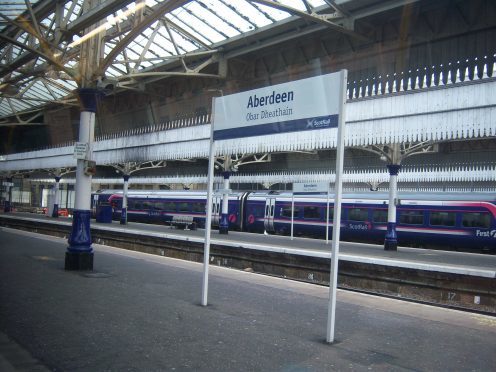Aberdeen city council may have to spend millions of pounds promoting Gaelic – despite fewer than 1% of Aberdonians speaking the ancient language
Local authority chiefs are being forced to comply with Scottish Government legislation and draw up a five-year plan to foster its use.
A 62-page document spelling-out councils’ obligations calls for street signs and liveries on vehicles to include Gaelic translations, a bilingual logo for the authority to be produced and courses in the language promoted to staff.
Other recommendations include considering teaching Gaelic to primary pupils and offering access to a learner class at National 4/5 level across the city’s secondaries.
The measures are required under the Gaelic Language (Scotland) Act 2005.
But last night, senior councillors said they would aim to “do as little as possible” to promote Gaelic while still complying with the law.
About 35.5% of the city’s population speak “Scots” – which includes the north-east’s Doric dialect – compared with 0.8% who are Gaelic speakers.
The aim of the legislation is to make Gaelic an official language of Scotland, “commanding equal respect” with English.
A report prepared for next week’s meeting of the full city council says: “Aberdeen City Council is committed to supporting the aspirations and objectives included in the National Gaelic Language Plan and the Gaelic Language (Scotland) Act 2005.
“The last known speaker of Gaelic in the Aberdeenshire dialect, Mrs Jean Bain, of Braemar, died in 1984.”
Hazlehead Academy is currently the only secondary to offer Gaelic as an option as a subject at all stages.
Council education convener Angela Taylor said there were just three pupils in the city studying the language in any capacity.
She added: “There just doesn’t seem to be the demand for it in the north-east.
“With the budgets being cut you have to wonder if there is a better way to spend public money.”
Finance convener Willie Young added: “It would cost us millions to implement this over five years.”
And Conservative north-east MSP Ross Thomson described the promotion of the language as “an SNP obsession”.
Aberdonian filmmaker Don Carney, who promotes the Doric, said the legislation was “twisting the arm” of local authorities in areas with little history of using the language.
He said: “The number of folk who speak Doric is far higher than 0.8% so I don’t understand this Gaelic obsession for the north-east.”
A Scottish Government spokeswoman said: “Gaelic is part of our identity and culture and is used every day in communities across Scotland.
“Gaelic speakers are now found in most areas of Scotland and Gaelic education has been available in Aberdeen for many years.
“Gaelic plans provide a way for authorities and public bodies to support the Gaelic language within their areas of responsibility in a proportionate way.”
